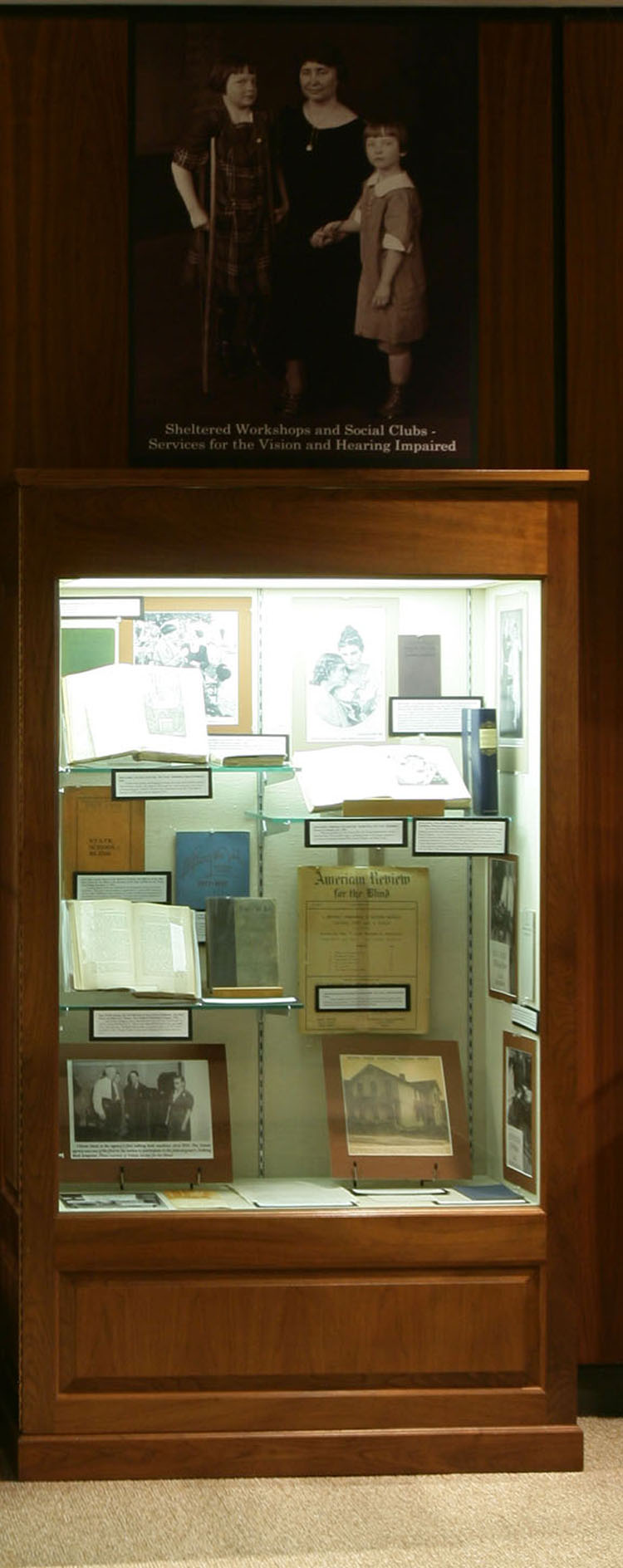
Sheltered Workshops and Social Clubs—Services for the Vision and Hearing Impaired.
While society has always held misconceptions about people with disabilities, the blind often suffered greater stigmatization because of the fear held by sighted persons that they could easily become blind. Deaf persons, too, suffered discrimination, especially those born deaf who were often believed to be developmentally disabled.
But that image changed when the autobiography of Helen Keller was published in 1903. Keller’s dramatic story of how teacher Anne Sullivan taught Keller to read and write Braille, use a typewriter, and to speak changed American’s perception of the blind and the deaf. If Helen Keller could succeed, others could too. In 1925, Keller and Sullivan visited Toledo and gave a speech at the Feilbach School for Crippled Children.
Education for blind children was an outgrowth of the American belief that every person had the right to an education. Between 1832 and 1833, schools for blind children opened in several cities. Ohio was the first state to make assisting blind people a public responsibility. In 1837, the state established the Ohio Institution for the Education of the Blind, the first state-supported blind school.
Services for the vision impaired in Toledo did not begin until nearly 100 years later. In October 1923, members of the Toledo Lions Club approached the Community Chest, the local fundraising organization, requesting that “something be done for the blind.” The following year, the Toledo Society for the Blind was founded. It offered social clubs and a sheltered workshop where members learned basket weaving and chair caning.
During the Depression, the organization began providing a free meal, supplied eyeglasses to the needy individuals, paid hospital expenses, and distributed surplus food. During War II, the Toledo Society for the Blind expanded its workshop program to support the civilian war effort. After the war ended, however, the majority of blind factory workers were laid off. Beginning in the early 1960s, the society began its community outreach services, including the collection and redistribution of discarded eyeglasses and a testing program for childhood eye diseases. In 1979, the organization changed its name to the Sight Center to emphasize that most of its clients had some degree of vision. The Sight Center moved its offices to a new building in South Toledo in 2007.
The education of deaf children in Ohio began with the founding of the Asylum for the Education of the Deaf and Dumb in 1826. Among the early controversies was whether to teach children to communicate using the oral or manual method. The first school for deaf children in Toledo was founded in 1911, and it moved into the Charles Feilbach School for Crippled Children downtown in 1918. Little is known of the school. In the late 19th and early 20th century, deaf persons began to define themselves as a linguistic and cultural group, and deaf clubs were popular as places to gather to create a sense of community. The Toledo Deaf Club dates back to the 1930s, and was originally called the “Silent Club.” The Toledo Deaf Club still exists today on Adams Street.